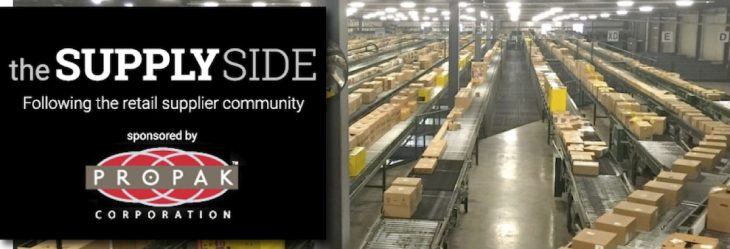The Supply Side: Delays, product scarcity challenge retailers, manufacturers
by April 16, 2020 3:28 pm 1,079 views

The supply chains of product manufacturers of consumer packaged goods and the retailers they supply are being challenged in unprecedented ways amid the spread of coronavirus.
Long truck lines form around manufacturing facilities waiting to pick up products headed for retail distribution centers. The scene is similar at retail distribution centers as trucks roll in for loading, but sometimes the wait for a dock is three hours. Store shelves are emptied most every day for products like toilet paper, eggs, and staples like dried beans and rice, according to Brad Shelton, president of collaborative solutions at market research firm IRI.
Shelton said during a recent IRI webinar the retail demand spikes have created big challenges for stores to keep shelves stocked. He said getting the right products in appropriate quantities is typically not that challenging with modern demand forecasting and sales data. But all of that is useless when shoppers empty shelves daily to the point of product scarcity.
“Retailers now are managing product scarcity as distribution centers and safety stocks have already been depleted,” said Scott Love, principal retail client solutions at IRI.
Love said this is the new normal. He said daily product sales of consumables began to escalate March 11 when President Donald Trump gave a prime time televised speech on COVID-19 and the global pandemic. The following day, the Dow Jones Industrial Average dropped more than 10%, and significant travel restrictions were implemented. On March 13, shoppers rushed to stores and filled their baskets to the brim planning to hunker down at home under orders from government and health officials.
Love said March 13 was by far the biggest shopping day for consumables this year or last year. Sales were up 53% over any other day in 2019 and 175% higher than any day thus far in 2020.
Nielsen reported sales of toilet paper were up 123.5% for the eight-day period of March 13 to March 21 when compared to the same week last year. Bath and shower wipes climbed 145% for the one week, and sales of cold and flu remedies increased by 192.2%. Dried beans proved a popular food item, increasing 377% year-over-year for the week ending March 21.
Rice sales grew 234.1%, while shelf-stable tuna sales grew 245.6% for the weekly period from the prior year, according to Nielsen.
Love said since the March 13 peak in sales consumers are still spending on food and other consumables at rates up to 30% higher than before the health crisis began. As sales have remained higher than normal through the back half of March, he said inventory levels at distribution centers and safety stocks in manufacturing warehouses were also running low.
Store inventories remain low in April for some items as the supplies they get daily are selling out within hours. Love said now that this buying frenzy has gone into April consumers will begin to see the second wave of out-of-stocks for non-essential items like hair color and spices. He said retailers are filling orders for items they can’t keep stocked, like pasta and canned meats, while less essential items are not a priority. He warns when these items go out of stock they will likely be out of for a while.
Love said sales began to level out in early April — not because there wasn’t demand, but because some of the items remained out of stock. He said order volumes have been erratic as big retailers are trying to get more allocations of products out to their stores.
Love said inventory shortfalls and warehouse shorts to stores are costly. A case study by IRI found one supplier saw lost revenue opportunities of $1.6 million because 72,000 cases of product were not available. He said manufacturers often operate with limited staff and still fight some sourcing issues for raw materials given the pandemic is global and began in China.
Love warns retailers will investigate categories after the crisis subsides.
They will look to see who came through during the critical time. He said retailers will probably keep higher inventory than normal in some categories when things return to normal. He urged suppliers to get an accurate count of their inventory in stores and distribution centers, because when the demand subsides, they would want to prevent any excess inventory getting hung up in warehouses resulting in costly buybacks for the suppliers.
He said Walmart and other retailers are giving exemptions right now for the on-time in-full (OTIF) protocol for shipments, but that doesn’t mean suppliers can get lax. He said suppliers need to be in constant contact with their large retailers to stay tight and aligned.
Love said it’s important for suppliers to work with their carriers on lead times for deliveries. Speaking with carriers in recent days, he reports long waits to get a dock at warehouses and sometimes three-hour waits to pick up from manufacturers. Love said suppliers need to make sure their carriers don’t all show up at the same time at the warehouse. He said lead time management is essential when there is excessive demand and product scarcity.
Editor’s note: The Supply Side section of Talk Business & Politics focuses on the companies, organizations, issues and individuals engaged in providing products and services to retailers. The Supply Side is managed by Talk Business & Politics and sponsored by Propak Logistics.
